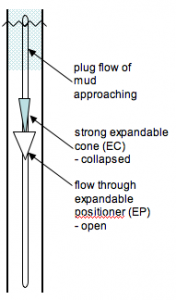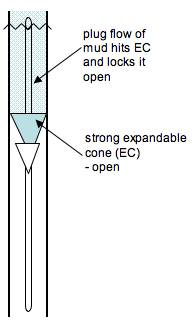Right, so now that I have tried to add something positive to the situation in an attempt to stop the BP leak, I think it is now time to begin to examine consequences for the company itself based on what we know already. My conclusion may seem extreme to some, but I am joined already in arriving at the point I will get to by respected figures such as Robert Reich, the former Labour Secretary in the US.
First, I want to lay out what has been established from sworn testimony before the US Congress to this point with regard to the BP catastrophe. More details will come out in the multiple incident investigations that are ongoing, but there are some serious findings already, including:
1. There is evidence that the blow-out preventer (BOP):
• Hydraulic lines to control valves were known to have been leaking;
• Its shear valve was not rated as strong enough to cut all the tubular that was sent through it;
• A battery was missing from the control panel onboard the rig that powered control for a third type of cut-off valve on the BOP, a dead man valve;
• The drawings onboard the Deepwater Horizon did not match the actual system on the sea floor as it had been modified, and no updates had been provided to the rig; and finally,
• The breakaway riser didn’t, causing further damage as it tipped over.
2. In addition, the Deepwater Horizon did not have an emergency response plan that covered this type of disaster, because it got the requirement for doing an EIA waived by the Bush administration’s agency (MMS) that has been proven in court to be criminally corrupted by energy/mining lobbyists at the time.
3. There were other identified potential failings and conflicts in the emergency notification and response on the rig as the immediate disaster unfolded there. But I won’t even go into those to make my point at this time.
4. Add to the above the facts we know about the safety and environmental record of BP North America:
• In 2005, 15 people were killed and injured 170 in an explosion and fire at the Texas City Refinery. Two years later safety folks in the US (OSHA) fined BP $20 million for failing to act to correct the deficiencies cited in the investigation of the Texas City disaster. Last year, OSHA fined BP another $87 million at the Texas City refinery and their other refinery in Ohio got a fine of $3 million. Once again, BP had failed to correct known deficiencies that led to the Texas City disaster, as well as many other serious risks.
• In the past 3 years, the two refineries of BP in the USA own 97% of what OSHA classes as egregious health and safety violations, including what are known as wilful violations. Those are the ones where you know something could kill someone, but you let it them go ahead and do it anyway.
• In 2006, after attempting to hide the fact for a while, BP admitted to a 270,000-gallon crude oil spill from its Prudhoe Bay pipeline that spread over 2 acres of the Alaskan tundra. They got a $20 million fine for that one from the EPA.
Now, I work in the oil E&P industry, and before that I worked in refineries and chemical and manufacturing factories. And I have worked that whole time in the technical environmental and safety areas. So, I have an opinion on the above. BP is all about cutting costs. It’s cost savings program in Texas City rubbed up against its HSE management system and spontaneously combusted to cause that disaster. It says so right in the Baker Report on the subject. It’s cost saving maintenance program in Prudhoe Bay failed to detect and repair the leak in its pipeline there, causing that spill. There is evidence that it treats EPA and OSHA fines as a lower cost option of doing business than actually correcting its failures to protect workers and the environment. And there is evidence to suggest that it pressures it contractors to save money by skipping essential controls. Like the control tests on its cement plug that Halliburton was installing in the Macondo well that were ignored, even though they showed non-conformances in differential pressure. Like the heated argument the head of the rig (OIM) and the lead BP representative on the rig were reported to have had about the drilling program the night before the Macondo blowout.
I have always respected the opinions I have heard from Robert Reich, and he reckons that due to the above facts, that BP should be put into receivership by the US government, as if it was becoming bankrupt. He cites the similar thing that was done with failed banks and trading houses in the recent global financial crisis. But I think Robert misses the point.
I reckon BP should instead be nationalised by the US government because it has lost its license to operate. I highlight the term, because BP can have various licenses from government agencies to carry out activities, but what I mean by license to operate is the more general right given to it by society in general if it agrees to play along with the general laws, precedents and societal norms of the yanks. And I think it is time for Barack Obama to invite the head of BP, Tony Hayward, to the White House and let him know that BP had lost its license to operate anywhere in the USA, meaning:
• All BP assets operating in the territory of the USA would be immediately nationalised, and become owned by the US government;
• These assets would be sold off as soon as possible to any qualified bidder that wished to buy them in the USA;
• The US government would use the proceeds of the sale of all BP assets to clean up the damage of the oil spills, wrecked lives and wrecked livelihoods of its victims; and,
• Any remaining funds would be forwarded to BP in the UK.
This would be followed in my version of how it goes by, “Now fuck off out of my office and out of my country, Tony. You are persona non grata”.
See, while I agree with Robert Reich that this spill could kill BP through bankruptcy, I’m not certain we can rely on that, and it definitely needs killing. It needs to be told, and a message needs to be sent out to any other corporation (bank, miner, whatever) that you can lose your license to operate in a democratic society, and you have crossed the line of acceptable behaviour to all the inhabitants of the USA (including its plants and animals) far too many times.



